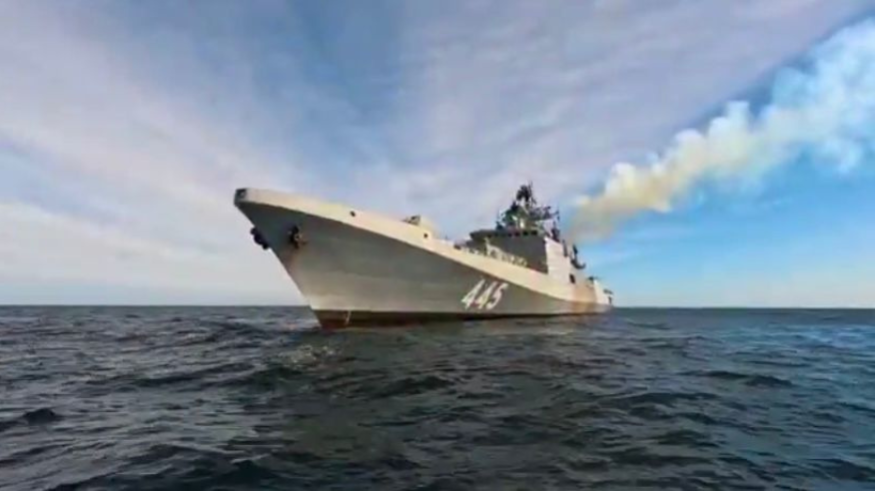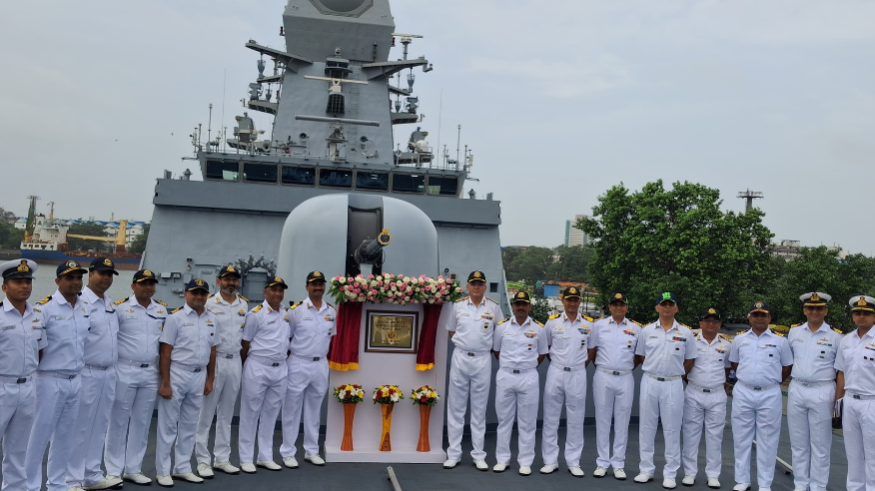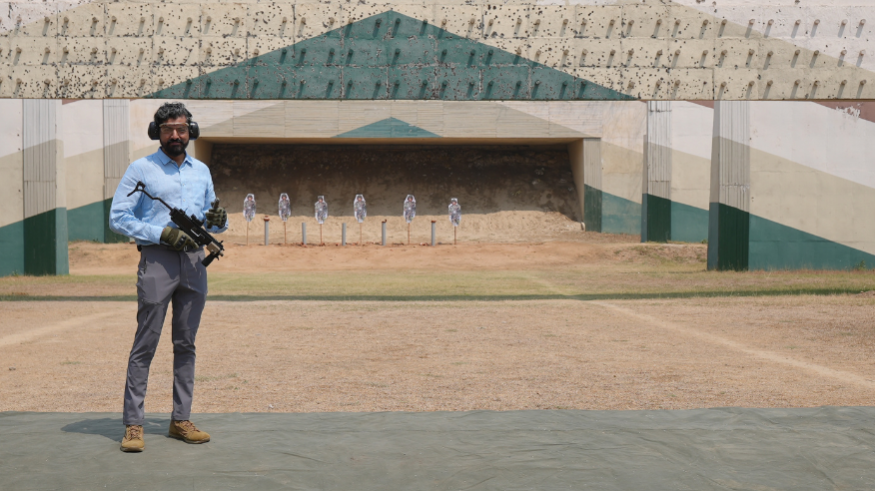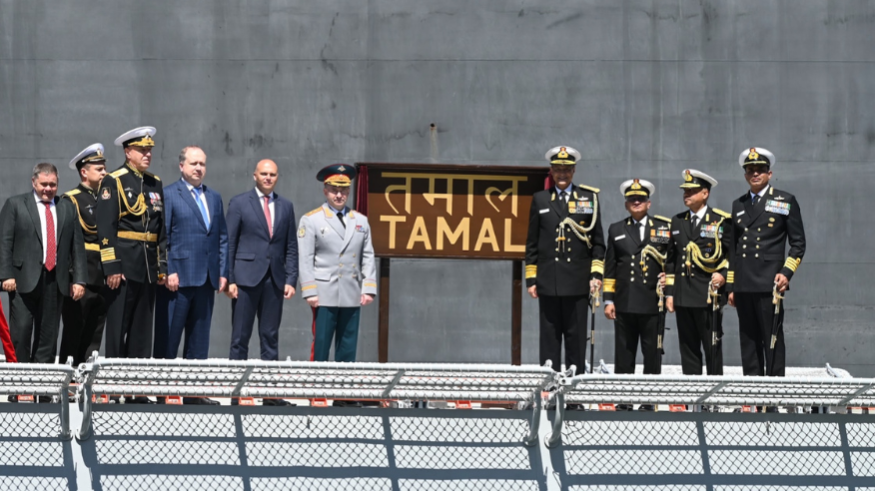The INS Tamal and the Krivak class effect
New Delhi: On July 1 the Indian Navy commissioned the INS Tamal , a Russian-built warship in Kaliningrad. The Tamal is the eighth in a class of Russian-built warships which the Indian Navy has acquired since 2003. The Indian Navy says it will be the last foreign-built warship to be acquired— signalling its intent to build all warships in-country.
The Tamal’s sister ship, the INS Tushil was commissioned into the navy on December 9, 2024. Two more ships of the class are being built at the Goa Shipyard Ltd— the Triput was launched at GSL in July 2024 and the Tavasya was launched in March 2025. When these two join the navy by the end of this decade, they will be the largest number of warships in the country on par with the Delhi class destroyers (ten warships in all).
India purchased the Talwar class frigates from the Russian Federation in three batches- the Talwar, Trishul and the Tabar between 2003 and 2004, the Teg, Tarkash and Trikand between 2012 and 2013. How a Soviet-era design came into the Indian Navy and the Russian Navy, is an interesting story.
The Hunt for the Red October inspiration
Fifty years ago, a sensational naval mutiny shook the Soviet Union. A Russian political officer hijacked a warship in Riga and attempted to sail it towards Sweden. Captain Valery Sablin, the warship’s zampolit or the political officer, and disturbed by the Brezhnev era. He wanted a return to the Leninist era of the Soviet Union. Sablin hoped to create a Battleship Potemkin moment— the 1905 mutiny when sailors revolted against their officers, a powerful propaganda tool for the Communist party. Sablin imprisoned the ship’s captain and officers who did not cooperate. The warship was fired upon by Soviet Su-24 fighter bombers and crippled before it could sail into international waters. Sablin was tried and executed. The warship in question was one of the Burevestnik class codenamed the Krivak class by NATO. The mutiny was suppressed in the Soviet Union but inspired Tom Clancy’s 1984 Cold War thriller The Hunt for Red October. In the thriller, it is the top secret ballistic missile submarine captain who kills the political officer and defects to the US.
The dependable Krivaks
The Soviet Union began inducting the Krivaks as specialist Anti-Submarine Warfare (ASW) frigates to accompany larger Soviet ASW frigates. Forty of these warships were built in four batches beginning from 1970. A majority of these warships were built at the Yantar Shipyard in the Kaliningrad enclave and were phased out by the early 1990s. Interestingly, the first of the class, the Bditelnyy was broken up at the Alang ship breaking yard in Gujarat in 1998.
The 1990s was also the time the Indian Navy had begun to decommission large numbers of its corvettes and frigates acquired in the 1960s. Build rates at domestic shipyards meant these retiring warships could not be replaced quickly enough. Naval teams began searching for an inexpensive frigate-sized platform in the Russian federation which could be built quickly in large numbers. There was a problem. Soviet warships focused on the ASW warfare — to destroy NATO submarines lurking around the home waters of the Soviet Union and clear the path for their fleets and submarines. The Soviet navy had either large ASW cruisers or destroyers or small ASW frigates of the Krivak and the Neustrashimy class. The Indian Navy evaluated both these designs and found the Krivak best suited to its requirements. The Krivak class frigate were designed to sprint at high speeds chasing submarines and destroying them with rockets, torpedoes and missiles. The 3,300 ton warships were powered by twin gas turbines and had a unique bow missile box housing the SS-N-14 anti-submarine missile. It had two single 100 mm gun mounts aft and carried the usual torpedo and ASW rocket fit common to Soviet warships.
Russia’s Severnoye Design Bureau modified the Krivak design to the Indian Navy’s requirements as the 1135.6 class. The forward ASW missile launchers were replaced by a 100-mm gun and vertical launch silos for the 3M-54 Club anti-ship and land-attack cruise missiles. Two Shtil-1 medium-range surface to air missile launchers, forward and aft, were added to the warship. Two Kashtan Close In Weapon Systems (CIWS) were added on either beam to shoot down incoming anti-ship missiles. The aft gun mounts were removed and space created for a helicopter hangar housing a Kamov-28 ASW helicopter or a Kamov-31 radar picket helicopter. The weight of the warship increased to around 3,500 tons with a full displacement of around 3,800 tons. The newest unit, the Tamal displaced around 3,900 tons.
The design impressed the Russian Navy which began building and inducting them as the Admiral Grigorovich class from 2010 onwards. Russia’s capture of Crimea in 2014 complicated the construction of three Grigorovich hulls at Yantar. Ukraine suspended the supply of the Zorya gas turbines used to power the warships. Russia offered two of the hulls to the Indian Navy in 2018. India purchased the two hulls for $950 million and the technology transfer to build them at the GSL.
The last foreign-built warship
The Tamal blends Indian and Russian cutting-edge technologies and best practices in warship construction. An Indian defence ministry release says the indigenous content of the ship has been enhanced to 26 % and the number of made-in-India systems have more than doubled to 33. The warship is equipped with eight BrahMos supersonic missiles for anti-ship and land-attack capabilities. It has a HUMSA NG Mk II sonar with the anti-submarine weapon firing complex amongst a host of cutting-edge weapon and sensors of Indian origin. It also features modern communication and data-link systems, navigation equipment and critical infrastructure, making the ship a powerful asset for naval operations. The major Indian OEMs involved were BrahMos Aerospace Private Limited, Bharat Electronics Limited, Keltron, Nova Integrated Systems from Tata, Elcome Marine and Johnson Controls India among others.















Comments